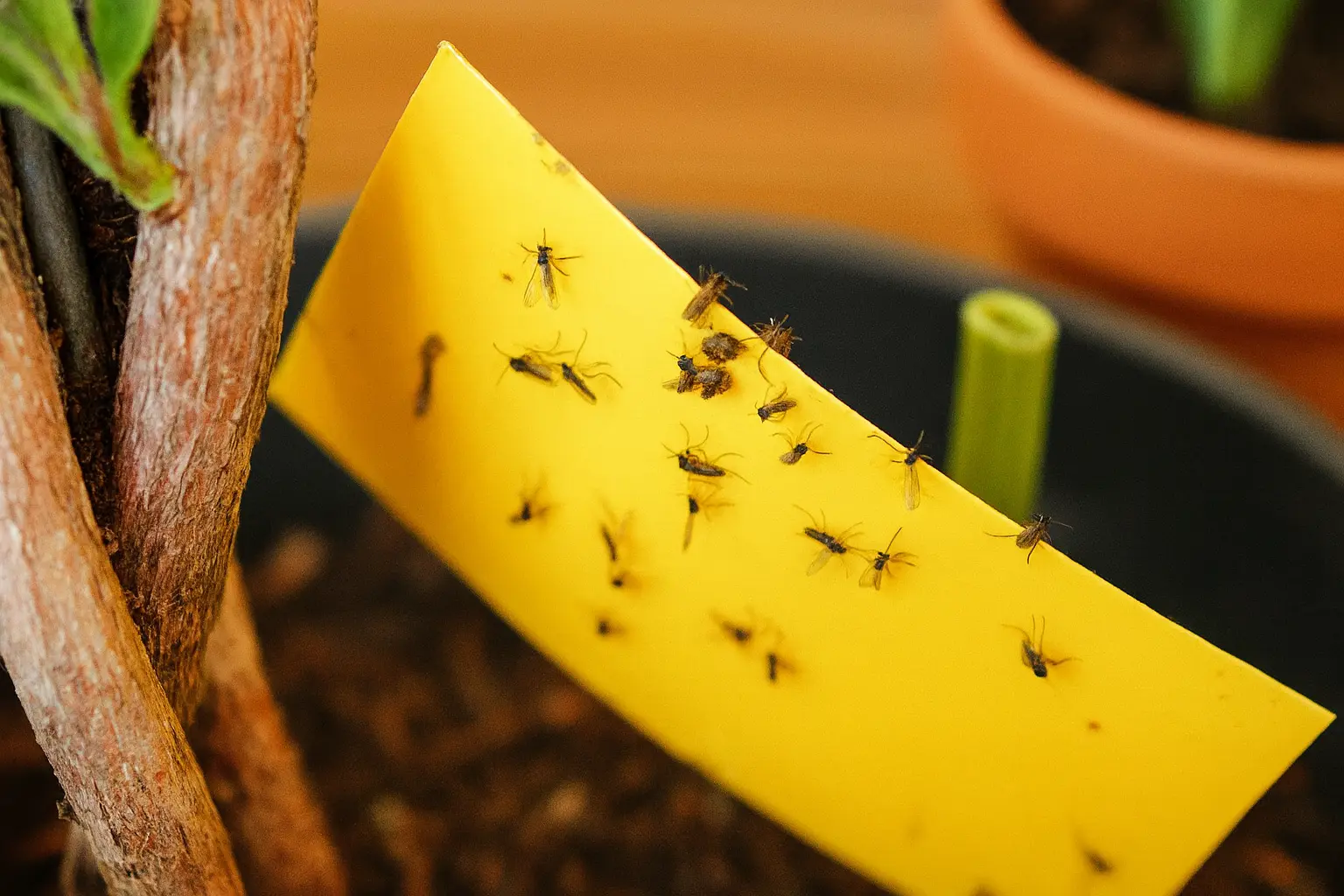In many houses, indoor plants provide a piece of nature that often makes our behaviour good and makes our living place peaceful. But to disturb our peaceful environment, uninvited guests: fungus gnats. These pests are not only a nuisance but can also be dangerous for your plants. In this article, we will guide you completely about how to get rid of fungus gnats and stop them from returning.
Understanding fungus gnats
Fungus gnats are small, dark-toned insects that thrive in damp conditions. They usually infest indoor plants with damp soil. While adults are more of a nuisance, it is their larvae that are the real danger to your plants. These larvae primarily consume fungi found in the soil, but they also damage plant roots by feeding on them. This can cause growth to be stunted and eventually yellowing and killing off your prized plants.
Identifying a fungus gnat infestation
The first step to solve any pest problem is accurate identification. The size of fungus gnats is small, but we can see them with the naked eye. They are mostly attracted to light. Hence, you can watch them flying near the lamp and windows. Another sign of infection is larva presence in sand, which are tiny, translucent worms with black heads.
Preventative measures
Prevention is important for controlling fungus gnats. Here are a few important steps to prevent these pests:
- Monitor Soil Moisture: The most often occurring source of fungus gnat problems is overwatering. Water your plants once more once the top layer of soil dries out. This not only determines gnats but also encourages better root development.
- Use Proper Potting Mix: Use a potting mix that drains well, minimizing moisture retention. Adding a little sand or perlite can improve drainage and discourage gnats.
- Keep Your Garden Clean: Remove dead leaves and debris from your plant pots. These could be breeding grounds for gnats.
- Inspect New Plants: Before bringing newly fresh plants into your house, always look for evidence of an infestation. This stops gnats from proliferating to your other plants.
Effective treatment options
If prevention fails and you find yourself dealing with an infestation, consider the following treatment options:
- Yellow Sticky Traps: These are the best method for catching adult gnats. Place them around your plants to reduce the adult population and interrupt the breeding cycle.
- Neem Oil: This natural insecticide is safe for plants and effective against the larvae stage of gnats.
- Diatomaceous Earth: Sprinkle this non-toxic powder around your plant bases. It eliminates gnats and other pests by drying them out instantly on contact.
- Hydrogen Peroxide Solution: Combine one part hydrogen peroxide with four parts water, then thoroughly soak the soil with this mixture. This solution completely finishes gnat larvae and aerates the soil.
- Biological Control: Beneficial nematodes and Bacillus thuringiensis (Bti) are natural predators of gnat larvae. Adding these to your soil can effectively lower the larvae population while keeping your plants safe and unharmed.
When things get tough
In severe conditions, more drastic steps may be necessary. If any plant is more infected and does not recover. So, you may discard it. This can be beneficial for you to prevent pests.
Cost of treatment
Management of fungus gnats can be quite costly, as was the case in which costs reached over $300 to save a collection of indoor plants. Planning ahead for pest control means saving you money and stress down the line.
Conclusion
Fungus gnats are one of those annoying pests that can trouble any plant lover, but armed with the right knowledge and tools, you can safeguard your indoor garden from such harm. Remember that the best defence against these pests is actually a combination of preventative measures and timely, effective treatments. Stay vigilant and respond as soon as you see some signs of infestation in order to keep your plants healthy and your home gnat-free.






